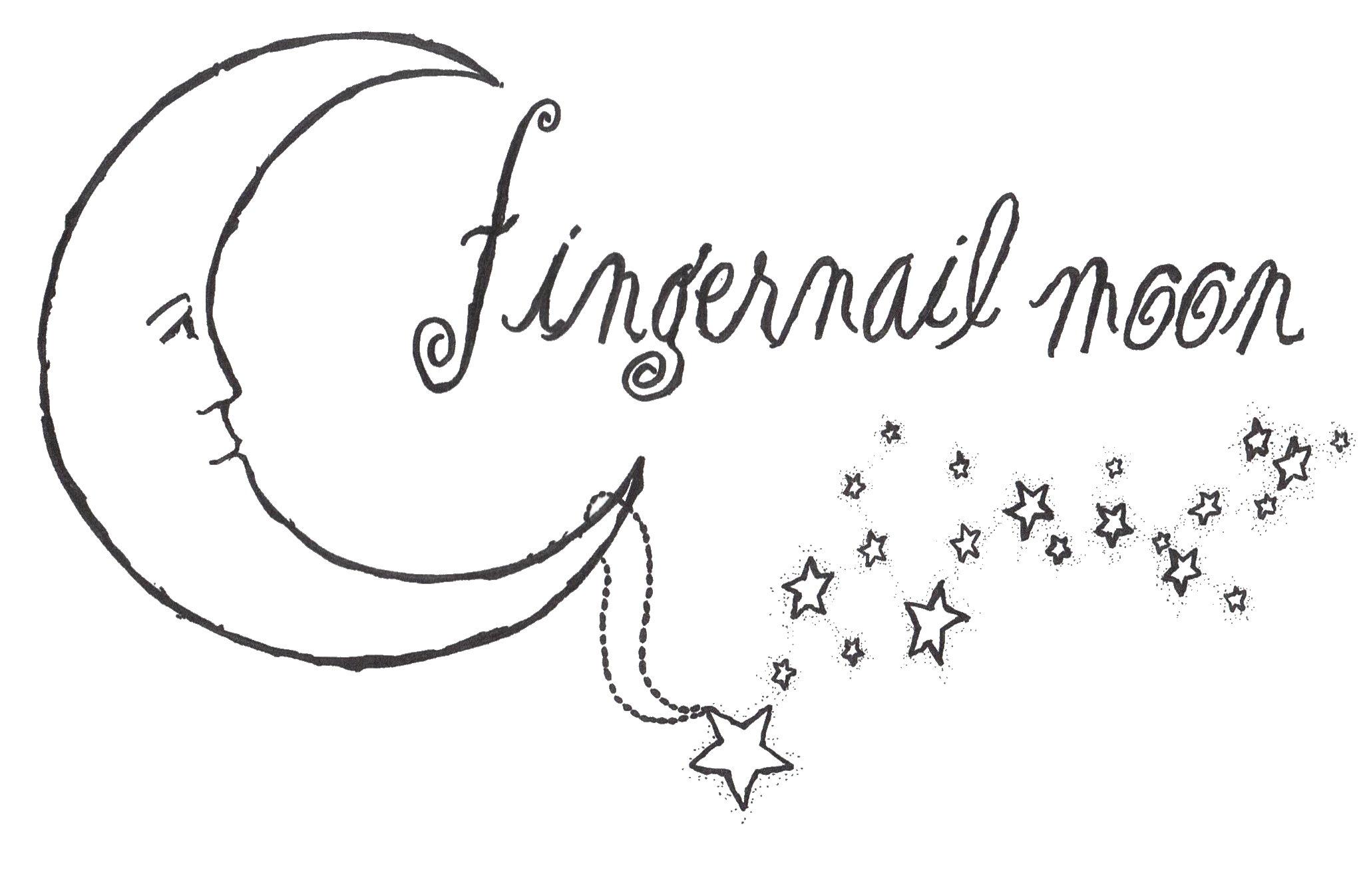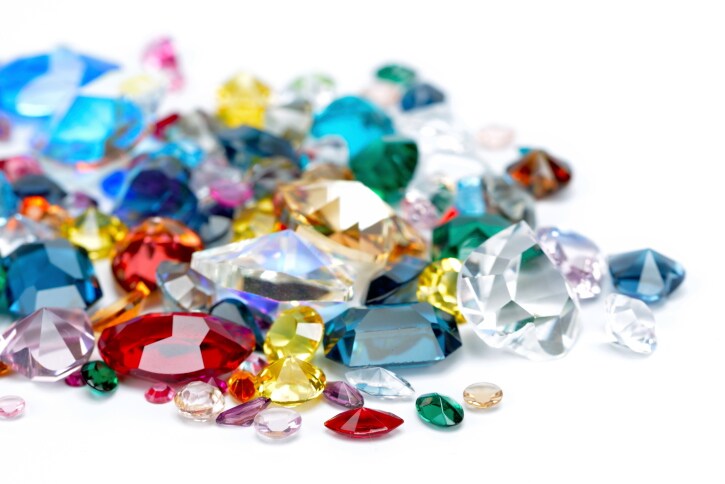Everybody knows what their birthstone is, right? You can't go wrong with a gift that contains the person's birthstone. One of the most popular gifts for Mom is a piece of jewelry that contains the birthstone of each of her children. But then there are the superstitions. Usually birthstones are considered to be lucky, but it's bad luck to wear an opal unless it's your own birthstone...that is unless it has been gifted to you. So much lore attached to birthstones, but most of us don't put a lot of thought into them, we just take them for granted.
But exactly where did the idea of birthstones come from? Who decided that September babies got to wear sapphires and January babies got garnets? What if I was born in August but I hate peridots? Well, you might be surprised to know the history of birthstones, where the traditions came from, and what your birthstone(s) really is(are).
Turns out the birthstones we associate with certain months now are not necessarily the same ones that were used in ancient times. In fact, what stones were called way back then are not necessarily the sames stones that go by that name now! For example, people didn't distinguish between rubies and garnets. What were called diamonds were probably often white sapphire or white topaz. What was called sapphire in the Bible was probably what we now know as lapis.

recreaction of the breastplate on the front of the central Sephardic synagogue in Ramat Gan
Historically, the stones assigned to each month as birthstones related to stones that were on the breastplate of aJewish high priest during the time of Moses. This breastplate was adorned with 12 jewels, each engraved with the name of one of the 12 tribes of Israel. These gems were believed to have been chipped off the throne of God and had special powers. Each gem corresponded with an astrological sign, and wearing that gem had talismanic benefits. It is not known for sure what the actual stones were, but translations of ancient writings are more in line with color than specific stones. Keeping all of this in mind, it is thought that the breastplate stones were:
- First row: carnelian, emerald, and chrysolite
- Second row: turquoise, sapphire, and amethyst
- Third row: jacinth, agate, and crystal
- Fourth row: jasper, beryl, and lapis lazuli
Another Biblical reference was a tradition of wearing certains stones based on the month as they were associated with the 12 apostles:
- Simon/ Peter - jasper
- Andrew - ruby
- James and John - emerald
- Philip - carnelian
- Bartholomew - peridot
- Thomas - aquamarine
- Matthew - topaz
- James - sardonyx
- Thaddeus - chrysoprase
- Simon - zircon
- Matthias - amethyst
- Paul - sapphire
Also, in the book of Revelations, the foundation stones of New Jerusalem were listed in the order of the Roman calendar:
- jasper
- sapphire
- chalcedony
- emerald
- sardonyx
- sardius
- chrysolite
- beryl
- topaz
- chrysoprasus
- jacinth
- amethyst
Beyond the Bible, many ancient religions and cultures made associations between specific stones and months, etc. Hindu tradition showed a link between gems and gods, months, days of the week, and certain qualities. During the Middle Ages the Eastern and Western traditions began to intermingle. The Eastern tradition of stones protecting the wearer came to the West, and people began to believe their birthstone protected them or strengthened their natural attributes.
Modern use of birthstones is generally agreed to have originated in the area of Germany and Poland in the 1500s, but specific stones and months varied regionally. In 1870, jeweler Tiffany & Co. published a pamphlet of anonymous Gregorian birthstone poems. There was a short poem for each month, associating that month with a specific gem.
No gem save garnets should be worn;
They will ensure her constancy,
True friendship, and fidelity.
Sincerity and peace of mind,
Freedom from passion and from care,
If they an amethyst will wear.
In March first open shall be wise,
In days of peril firm and brave,
And wear a bloodstone to their grave.
Diamonds shall wear, lest bitter tears
For vain repentance flow; this stone,
Emblem of innocence, is known.
In spring’s sweet flowery month of May
And wears an emerald all her life
Shall be a loved and happy wife.
And owes to June her hour of birth,
With ring of agate on her hand
Can health, wealth, and long life command.
Those who in July are born;
Then they’ll be exempt and free
From love’s doubts and anxiety.
No conjugal felicity;
The August-born without this stone,
`Tis said, must live unloved and lone.
Are rustling in September’s breeze,
A sapphire on her brow should bind
`Twill cure diseases of the mind.
And life’s vicissitudes must know,
But lay an opal on her breast,
And hope will lull those woes to rest.
With drear November’s fog and snow,
Should prize the topaz’s amber hue,
Emblem of friends and lovers true.
The month of snow and ice and mirth,
Place on your hand a turquoise blue;
Success will bless whate’er you do.
The modern list of birthstones that we tend to use today in the United States was defined in 1912 by the National Association of Jewelers, with some alternatives added in 1952. But that list bears little resemblance to the original breastplate!
- January garnet
- February amethyst
- March aquamarine, bloodstone
- April diamond
- May emerald
- June pearl, moonstone (added alexandrite)
- July ruby
- August peridot
- September sapphire
- October opal (added pink tourmaline)
- November topaz (added citrine)
- December turquoise, zircon (removed zircon, added lapis)
It seems that the colors of the modern and traditional birthstones tend to be the same, implying that the traditional color is the important consideration. Blue topaz, for example, would not be an acceptable birthstone choice for November, only golden topaz. In fact, blue topaz is sometimes considered to be an alternate birthstone for December as it is the right color. Blue sapphire is the traditional color for September, but sapphires come in every color of the rainbow (except hues of red which are given the name ruby), as do tourmalines and even diamonds. Garnet, usually thought of as a red birthstone, actually is available in a variety of colors including orange, green, and even the lovely deep purple color of grapes.
But it is the preferences of the wearer that override all other considerations regarding the correctness of a birthstone. Birthstones tend to be a very personal choice, even to the point that people who don't like the color of their true birthstone will find any excuse to claim another. For example, the true November birthstone is citrine or golden topaz, yet many people choose blue topaz even though that lovely blue color is the result of treatment of a golden or colorless natural topaz crystal.
And don't forget, you have another choice as well...your zodiac sign! Stones associated with astrological signs date back as far as monthly birthstones. While birthstones by month are generally symbolic, astral stones are believed to be linked to the astrological sign and enables the wearer to tap into his or her hidden power.
- Aquarius Garnet
- Pisces Amethyst
- Aries Bloodstone
- Taurus Sapphire
- Gemini Agate
- Cancer Emerald
- Leo Onyx
- Virgo Carnelian
- Libra Chrysolite
- Scorpio Beryl
- Saggitrius Citrine
- Capricorn Ruby
So, what is your birthstone? For the next 12 months I will publish a blog each month detailing the relevant stones and their properties. Stay tuned!

